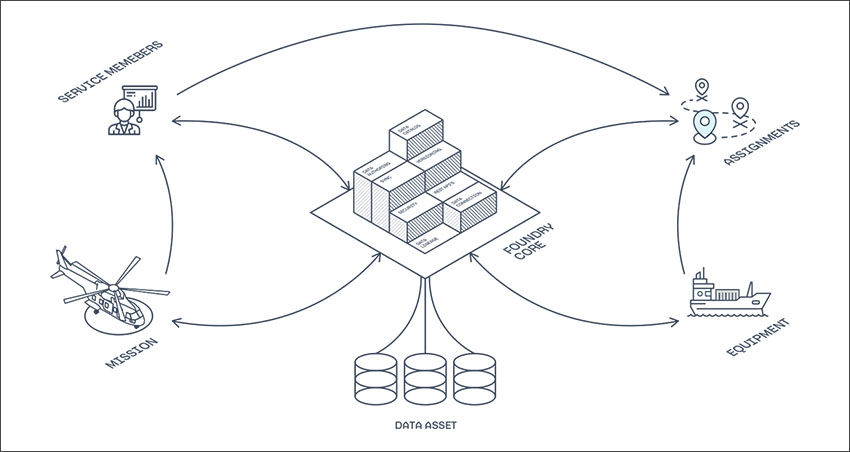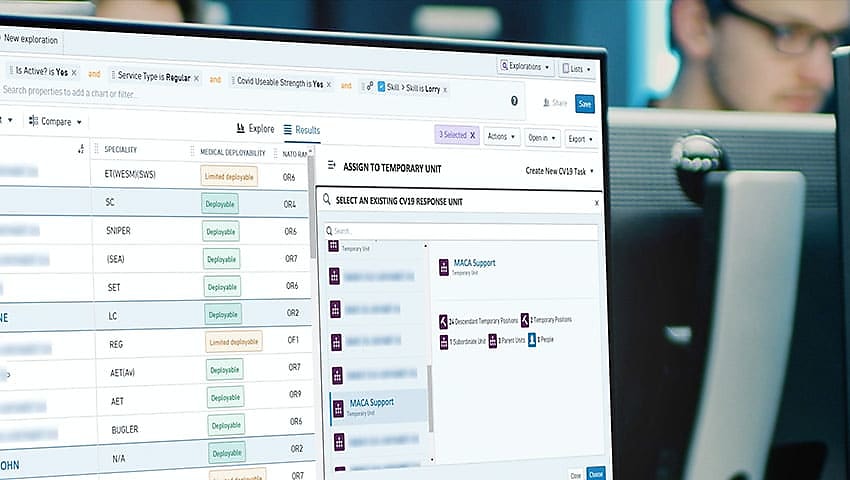President of Palantir Technologies Australia, Dr. Mike Kelly, explains the importance of an effective Data-Driven Information Architecture for modern military institutions.
In the face of growing organisational complexity and inflexible bespoke technology solutions, many of today’s most important institutions are finding it harder to sustain the pace of innovation and fulfill their fundamental missions. An effective Data-Driven Information Architecture for processing, exploiting and disseminating data across the entire organisation is critical to a modern military institution’s ability to quickly develop insight and take operational actions.
An effective Data-Driven Information Architecture must consist of:
- a secure data foundation with strong access control, enabling efficient data integration, complete traceability and auditing
- a flexible data ontology that can be easily updated as new systems come online and external factors change
- AI/ML integrations that accelerate human decision-making
Organisations that subdivide their operations into increasingly specialised functions, will be disadvantaged when it comes to strategy, decision making, transparency, and cross-functional collaboration. The presence of these functional silos, technical constraints and the sheer breadth of information makes it extremely difficult to make decisions based on truth.
Without a Data-Driven Information Architecture approach, it becomes likely that various data transformation processes will be implemented over time with varying levels of success. This makes it hard to fully trust datasets, which may have previously been processed in ways invisible to an end user.
With a Data-Driven Information Architecture, organisations can have seamless linkage between data sources and applications for end users, without compromising on security and data integrity. So how do organisations take the step from strategy to on-the-ground delivery?
The United States military has over one million uniformed personnel, hundreds of commands, and functional areas. Given the sheer scale of its operational network, the Army faces enduring challenges building cohesion, ensuring collaboration, and deploying globally optimised strategies.
Seemingly simple questions quickly become monumental fact-finding missions, like “How many helicopters do we have?” or “How many units meet ‘readiness' standards?”. More complex inquiries like procurement ROI analysis or battle simulation take inordinate amounts of resources to complete.
In 2019, the U.S. Army chose Palantir as its “Vantage” solution. Taking a Data-Driven Information Architecture approach, the Vantage program gives Army leaders, soldiers, and staff an integrated data foundation to support data-driven decisions at every level across the organisation.
Vantage connects the Army enterprise by fusing previously siloed functional units, providing a common operating picture for Army leadership while enforcing strict access controls to safeguard sensitive data. It also provides operational tooling to understand and improve readiness postures, run complex simulations on personnel and material deployment, and increases ROI on critical areas of Army spending.

Most large organisations have a wealth of siloed data assets, but falter in transforming that raw data into valuable outcomes. Data is only useful insofar as it can be integrated, protected, trusted, and delivered to a wide range of users. Palantir’s software platforms provide ready-to-use infrastructure to make this possible.
With integrated data and the right technology, modern military institutions can solve hard problems. In 2004, we looked at the available technology and saw products that were too rigid to handle novel problems, and custom systems that took too long to deploy and required too many services to maintain and improve.
We saw automated approaches that failed against adaptive adversaries, and all-or-nothing access controls that forced organisations to make unacceptable trade-offs between collaborating and securing data from misuse. We saw a need for a different kind of technology, that’s why we founded Palantir.
Palantir’s experience in using data to drive decisions began as a close partnership with the intelligence and law enforcement communities in the United States. Our customer base has since expanded to include a broad spectrum of government agencies across the Five Eyes and partner nations, as well as major firms across manufacturing, logistics, healthcare, banking, insurance, aviation, energy, and resources. Since 2010, Palantir Australia’s local team of Australian engineers and project managers has enabled our work here.
Performant software is no longer a luxury, the dominant institutions and organisations will be the ones that get the technology and use of data right. A Data-Driven Information Architecture is critical to modern defence and security institutions - Palantir platforms deliver proven value out of the box and generate competitive advantage.
https://www.palantir.com/contact/get-started/







